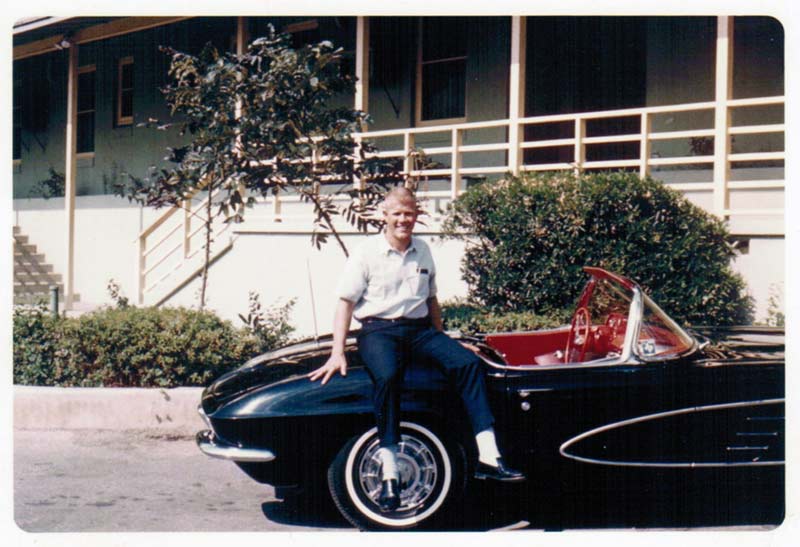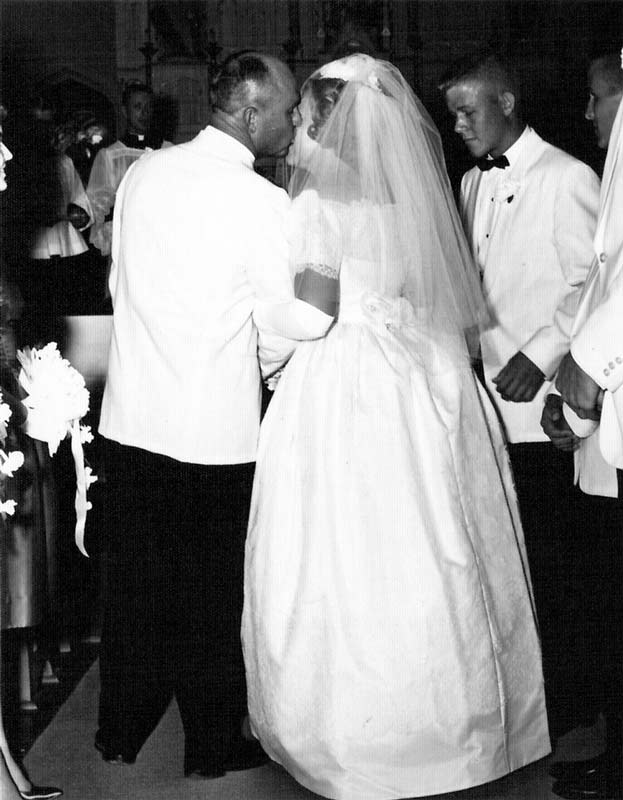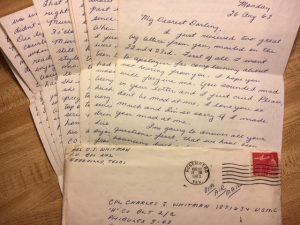Charles Whitman’s 1966 Rampage
5The UT rampage was not the first mass murder in American history, but it was the first televised shooting of its kind, and the sensational scale of Whitman’s crimes generated media headlines across the country. For five decades, the story has been a subject for continued “true crime” exploration, inspiring made-for-TV style documentaries ranging from The Deadly Tower (1975) to Deranged Killers: Charles Whitman (2009). In 2016, the film, Tower, became the first theatrical release to document the experience of victims and survivors on the ground. Gary Lavergne’s book, A Sniper in the Tower (1997), is considered the definitive synthesis of the case, so much so that Lavergne himself was the subject of a 2003 documentary for the History Channel’s True Crime Authors miniseries (“Sniper in the Tower”). Story after story addresses Whitman’s Eagle Scout achievement, his military training, drug use, fascination with guns, hatred of his father as well as his much-debated brain tumor (Ward). Limited attention has been paid to Whitman’s attitudes about women and sex. Whitman’s wife and mother are usually rendered through romantic/sensational re-enactments or minimalism/omission, all in service of “true crime” formula with its victims, heroes, and obvious villain. This repeated and recursive glossing suggests gendered habits of mind—both of authors and audiences—rather than direct intention or malice.
Depictions of Intimate Murder in the UT Austin Case
In addition to the investigative documents assembled by law enforcement agencies, a significant sample of Whitman’s personal writing (from ages 15–25) was publicly preserved and is now housed in the Austin History Center. Documents in this archive include notebooks, a day planner from his first year of college, a diary, miscellaneous “inspirational” notes, and four letters he composed within hours of the shooting. This was the extent of the accessible record until 2015, when I was granted exclusive access to additional materials from the private collection maintained by his wife’s eldest brother.
9Over time certain documents—and parts of documents—have received more scrutiny than others. Whitman’s simplistic references to “love” for his mother (“I loved that woman with all my heart”) and his wife (“my most precious possession”) have been inextricably bound to his justification for their murders. In the History Channel miniseries episode “Sniper in the Tower”, Lavergne summarized a motive for the first two killings, sampling Whitman’s language from his typed letter the night before: “He probably killed them for the reason he said he killed them: to spare them the trauma and embarrassment of what he knew he was going to be doing later that morning.” Lavergne, taking Whitman at his word, reserves “trauma and embarrassment” for the public acts “he was going to do later,” inadvertently ennobling the private murders as tragic casualties of misguided valor or mistaken generosity (00:25:24–00:25:40). 10We can see similar gaps of attention when it comes to the content of Whitman’s writing in the scene where he murdered his mother. In the one-page letter he printed on yellow legal paper and left on his mother’s body, he repeated twice that he had “relieved her of her suffering” at the hands of his father, to whom she had given “the best 25 years of her life.” He portrayed himself as a divine agent, sending his mother to “heaven” after suffering from his father’s abuse. But Whitman also added a grotesque verdict: “[My father] has chosen to treat her like a slut that you would bed down with, accept her favors, and then throw a pittance in return” (“To Whom It May Concern”). 11This statement is composed of two clauses—the ugly main clause and a long dependent clause—and only the very last phrase (“a pittance in return”) has drawn serious attention. The language parallels two other final references to money and family: one, in a short note referring to forty dollars sent by his brother, Patrick; the other, a mention of his mother’s “usual standard of living,” hand-scrawled at the end of a typed letter found in his home. Understandably, like investigators after the crimes, Lavergne zeroed in closely on Whitman’s accusation about his father as a withholding “provider”:In an attempt to trivialize the area of life in which his father was clearly superior, Whitman again focused on what his father allegedly failed to provide for his mother […]. [His father] actually provided quite a good standard of living for his entire family, even after Margaret left Florida. There were allegations from Margaret’s brothers, however, that [he] had cut off all financial support for Margaret and Charles […] only the day before [Charlie] decided to become a mass murderer. (108)
While questions about economics are important, Whitman’s choice of words points us to something profound. Summing up his father’s treatment of his mother with a mixture of vulgarity and delicacy communicates sexual shaming as well as a high-stakes division between “mothers” (good women) and “sluts” (bad women). Here, financial anxiety or blame cannot be isolated from gender norms that divide women and assign heterosexual family roles, protection, and ranks. Kathy’s brother, Nelson Leissner, informed me in an interview that Whitman’s father called to brag days before the shootings about his involvement with a woman Kathy’s age. (By November after the killings, his father married again.) The question of divided resources would have been fraught by any “threat” of a new sexual-familial relationship, particularly with a younger woman who already had one child and another on the way (Lomartire).
12Such a “threat” would have mattered only to a young man already deeply indoctrinated by masculine codes of competition, female subjugation, and domestic purity. Some sons would dismiss the sick hypocrisy of any father using sexual taunts to pressure the abused mother to return. But this was an eldest son who had married in a Catholic church on his parents’ wedding anniversary four years earlier, a son who was still not financially independent and who feared that he might be sterile. Viewed together, Whitman’s ceremonious use of a brand new Bowie knife and crushing his mother’s wedding ring finger (Lavergne 102–03) gruesomely reference the attempted restoration of a violated honor. 13Blind spots in reconstructions of his wife’s killing are even less subtle. Kathy’s murder is framed like a dark fairy tale, a convention reinforced by her youth and beauty as well as her marriage bond with her killer. Typical phrases are “killed in her sleep” (Garcia) or “stabbed to death in her sleep” (Eagleman). Such passive descriptions are shorthand for an approach used by Lavergne, who recreated the scene entirely from Whitman’s perspective. After describing his quiet approach to Kathy’s bedside, his exposure of her nude body, and the “considerable strength” of “vicious thrusts” from his hunting knife, Lavergne concludes:Given the size of the knife and the location of her wounds, Whitman probably hit her heart […]. Without struggle, Kathy died instantly. […] She most likely went from sleep to death without ever seeing her murderer. It was just as well. Whitman was right: she was as good a wife as anyone could hope. Her loyalty never wavered, even after physical assaults and mental anguish. She stayed with him until the very end. (108)
This representation disallows entirely the possibility of Kathy’s pain, terror, or physical resistance to an attack while at her most vulnerable—committed by the man with whom she had shared a bed. Ironically, Lavergne does imagine the possibility of Whitman’s final homage to Kathy’s body before he left the house, reinforcing the image of Kathy as an object of her husband’s gaze: “No one will know if [he] looked at her one last time” (120). The result of the sequence is a perverse aubade, a violent lover’s farewell. Kathy’s qualities as “a good wife” (who “stays until the end”) are also emphasized here, validated by the author’s agreement with notes Whitman added above and below a journal entry from 1964: “I still mean it,” he wrote. “My wife was a true person” (Daily Record of CJ Whitman).
14Continued repetition of select declarations from Whitman, divorced from the context of his language and the dramatic irony of his violence, has unintentionally ratified them, perpetuating a wounding against the women and their families—and by extension, any women killed under similar circumstances. One enduring impact is to cast additional scrutiny of these scenes as unnecessary or unseemly, making narrative realism seem salacious in comparison to the common wisdom of the tale as repeated again and again. Another dangerous result is an overemphasis of the victimized party’s character qualities as a necessary threshold for empathy from readers.A Fractured Fairy Tale: Whitman as “Man”—Kathy as “Wife”
15We can now read Whitman’s attitudes by tracing them forward in select letters to Kathy beginning two months prior to their marriage. An even larger sample of her letters—both to Whitman and her own mother—provide insightful points of comparison, showing how she experienced his behavior as well as how she constructed her own responses. Whitman’s posture of control is evident early on, prior even to the couple’s official engagement, as in the first line of a letter referencing their dating relationship: “How’s it feel to be tied down to the same fellow for 4 months, 1 day, 23 hours, and 35 minutes? I sure am glad I tied down that little dropper of mine.” His fixation on a precise moment of “capture” and a third-person reference to Kathy as a “little dropper” together undermine his inquiry about her feelings. A sentence shortly afterwards supports this interpretation, as he critiques her latest letter: “Miss Leissner I have a bone to pick with you […] if I want to read typewritten paper I can find plenty of it at the ROTC building” (12 June 1962, Select Letters). 16Proprietary demands pepper Whitman’s communication, and his sweetness or politeness always betrays an agenda. He treats Kathy’s social connections as his own from the beginning: “Oh, ask Floyd [the Justice of the Peace] if he can sell me liability insurance. I am having some trouble here. […] Find out and let me know if he can insure me” (9 June 1962, Select Letters). His requests reinforce Kathy’s expected menial or secretarial roles, such as sewing a patch on his karate outfit, taking care of floor mats for his new car, keeping track of clothing he left here or there, sending him a tinted photo of herself, cleaning their new apartment “the way she likes it,” and wedding preparations—including a task traditionally performed by the groom: purchasing the wedding bands. 17Whitman also casts himself as “expert” in odd ways, advising Kathy, for example, about getting a “premarital exam” because he’d seen an article in Modern Bride. (This after she has already informed him that she saw the family doctor.) He directs her to “get her teeth in good shape” because she won’t be covered under his military dental policy, adding another comment that describes Kathy as a material property rather than a person: “Your dad’s sure getting stung isn’t he. Getting you ready to give to someone else” (24 July 1962, Select Letters).

[Y]ou think it’s dependence but really that’s the way it should have been when you first thought you were in-love with me […]. [I]t’s going to be almost like getting to know each other again when you get out […]. [W]e are both going to have to realize that when we get back together and respect each other’s new ideas. [n. pag.]
In another letter the following month, she worries that the “awful nice things” he said about her from a distance could be ominous:
21Kathy’s insight and her “fear”—framed cautiously around a specific recollection of his “dissatisfaction”—are poignantly attuned to the dangerous nature of the pedestal Whitman had placed her upon. In a different marriage, the couple’s reunion in December 1964 might have brought Kathy’s “new ideas” of “respect” and mutuality to fruition. Instead, Kathy’s college diploma and professional status as a certificated science teacher would become threatening evidence to Whitman that she could thrive without him—and that she was capable of eluding his control.Honey, when your [sic] not with someone you love, it’s awful easy to build them up to something they aren’t and I’m afraid this may be what you’re doing. I even got this impression when you were home on leave in May. You seemed a little dissatisfied with me in some ways and I really am the same girl you married. I may be unjustified in my fear but it could happen. (Letters, 13 June 1964)
The Problem of the Gender Pedestal
22Whitman’s use of a pedestal to elevate and to “measure” Kathy is documented in the diary he returned to after killing her. The entry dated 23 Feb. 1964, composed as he completed his sentence of hard labor following his special court martial, is often cited as proof of his affection. A more attentive reading, however, shows exactly how Whitman defined love, gender relations, and Kathy herself. The note he scrawled at the top—“I still mean it”—can only be interpreted favorably if we ignore the content of the entry he identified for posterity as important (Daily Record of CJ Whitman).
New Artifact in an Old Story
31One letter preserved by Kathy’s family was written by Whitman and mailed to her parents the morning before the shootings on August 1. According to Nelson Leissner, it arrived the day of Kathy’s funeral and burial and was kept private for nearly fifty years (Personal interview). In two pages composed on drafting paper, Whitman reprises similar themes and phrases in the letters left with his mother (“I was just causing her unnecessary suffering,” “I believe she is in a happier place now,” “I did Kathy a great favor”). His admissions of personal and gendered inadequacy are trapped in a loop of circular reasoning for “tak[ing] Kathy’s life”: “I am so ashamed that I could never support her as she deserved” or “I will always regret that I did not feel worthy of her” (Select Letters). He also discloses that he had been contemplating murder “for the last two days” and that he “tried to be as sweet as possible on this her last day.” He then lists a childlike résumé of “sweet” activities as mitigating factors, including taking Kathy to lunch and seeing a movie during the break of her split shift at the phone company. He speaks on her behalf, stating that her “greatest fear in life was that we would be incapable of having children of our own.” 32As hideous as all this is, no parent would have been prepared for Whitman’s turn in the second paragraph: “Tonight after she talked with you we shared a last interlude together, she has always been a fine lover. Then I tried my best to kill her as painlessly as possible, however, I have my doubts about how painless it was. She was a very strong girl” (Select Letters). The tangle of exhibitionism and romanticism—“shared” and “interlude”—makes the blasé transitions between sexual contact and brutality even more jarring. Whitman represents himself as final judge, including dehumanizing “compliments” and referring to Kathy as “girl” even in death. 33It is difficult to face this document. However, it may help to remember that it was preserved rather than destroyed by her family, and that it witnesses the horror of Kathy’s last moments as well as the coldness and detachment of the man who killed her. We must also respect their sharing the letter with the public as a conscious choice. How are we to read this letter? With both the horrific understatement of Kathy’s pain and the suggestion that Kathy fought for her life, the document may best be viewed as a literary premonition of the “creepshot” photos taken by present-day campus predators after sexual assaults, “accidentally provid[ing] hard evidence in cases where ‘she’ was unconscious and cannot testify to what happened” (Oliver 9). In this case, however, the evidence was sent not to fellow conspirators, but to secondary victims, and Kathy was not unconscious, but dead. 34A letter is not a photographic record, but this text exposes how perverse it is to perpetuate a self-serving myth of mercy for Whitman’s violence. In the absence of an autopsy, it has been disturbingly easy to employ language aestheticizing Kathy’s final moments. To acknowledge this epistolary artifact does not necessitate re-indulging the pornography of its author, but instead demands that we recognize intimate violence without airbrushed or “star crossed” verbiage that spares only the murderer—and us—rather than the victim or her family. After half a century, we should be shocked that a “creepshot” is necessary to disrupt how we elide or abject intimate murders through the gendered norms of true crime narratives. As authored for the intimate audience of grieving parents (and “with a love as thought [sic] you were my own […] please forgive me, if you can”), the letter is a summative exhibit of “courtliness and sadism” (Select Letters)Conclusion
35Narrative erasure of domestic injury or killing in American stories of public violence perpetuates a social injustice: repeated silencing of private victims who are usually women. We must reconsider how “softened” or selective depictions only make women’s deaths more palatable, especially at the hands of men who claim to love them. Mid-century sexism may appear quaint when we compare it to the misogyny expressed so freely in contemporary social media forums, but we have inherited its violent legacy. Fifty years after Whitman murdered his wife and mother before ascending the UT tower to shoot at strangers, American voters elected to our highest public office a man caught on tape bragging about grabbing women “by the pussy” (Mathis-Lilley). Attitudes that degraded, ranked, and separated women more than a generation ago continue to impact daily lived experience in ordinary domestic spaces—in bedrooms, offices, and on college campuses—whether or not anyone points or shoots a gun. Importantly, gendered entitlement transcends political identification, as demonstrated by the “volatile” and abusive background of James T. Hodgkinson, who in June 2017 shot at Republican congressmen practicing on a baseball field (Turkewitz, Stolberg, Eligon, and Blinder). 36Domestic terror is a matter of women’s lives and public health, and it is past time to notice the connection between what happens, how we talk about it, and what we are able to remember. Writing of an estimated sixty-six thousand women killed by men every year, Rebecca Solnit refers to femicide as an ultimate erasure: “Such deaths often come after years or decades of being silenced or erased in the home, in daily life, by threat and violence. Some get erased a little at a time, some all at once. Some reappear” (71). Kathy has been able to “reappear” because her brother, Nelson, protected the primary documents that preserved his sister’s voice and perspective. When we do not question how and why domestic violence is subordinated to public spectacle, we unintentionally perpetuate the abuser or killer’s perspective about when and how women’s lives and deaths matter. We must re-attune our awareness so that gendered and sexualized violence no longer seems, by distorted comparison, a minor detail or narrative footnote, despite the reality of its massive and continued collective impact.Works Cited
Corbett, Ken. Murder over a Girl: Justice, Gender, and Junior High. New York: Holt, 2016. Print.
“Deranged Killers: Charles Whitman.” Youtube 3 Jan. 2013. Web. 9 June 2017.
Dugger, Ron. “Who Was Charles Whitman?” Texas Observer 19 Aug. 1966: 3–5. Print.
Eagleman, David. “The Brain on Trial.” Atlantic (July/Aug. 2011). Web. 15 Sept. 2016.
Everytown for Gun Safety Support Fund. “Mass Shootings in the United States: 2009-2016.” Everytownresearch.org. Mar. 2017. Web. 21 June 2017. PDF.
Garcia, John. “Family Shares Private Memories of Kathy Leissner Whitman.” Time Warner Cable News 28 July 2016. Web. 1 Aug. 2016.
Kimmel, Michael. Angry White Men: American Masculinity at the End of an Era. New York: Nation, 2013. Print.
Kristeva, Julia. Powers of Horror: An Essay on Abjection. New York: Columbia UP, 1982. Print.
Lavergne, Gary M. A Sniper in the Tower: The Charles Whitman Murders. Denton, TX: U of North Texas P, 1997. Print.
Leissner, Nelson. Personal interview. 14 Dec. 2014.
Lerner, Gerda. The Creation of Patriarchy. New York: Oxford UP, 1986. Print.
Lomartire, Paul. “Demons and Doom: The Whitmans of Lake Worth.” Palm Beach Post 28 July 2016. Web. 1 Aug. 2016.
Maher, Bill. “Sexual Frustration and Mass Shootings.” Youtube 17 Oct. 2015. Web. 28 Feb. 2017.
Mathis-Lilley. “Trump Was Recorded in 2005 Bragging about Grabbing Women ‘by the Pussy.’” Slate 7 Oct. 2016. Web. 15 Mar. 2017.
Oliver, Kelly. Hunting Girls: Sexual Violence from the Hunger Games to Campus Rape. New York: Columbia UP, 2016. Print.
Schonfeld, Zach. “Misogyny and Mass Murder Paired Yet Again.” Newsweek 28 May 2014. Web. 22 Mar. 2017.
Scott-Coe, Jo. “But What Would She Say? Reframing ‘Domestic Terror’ in the UT Austin Shooting.” Pacific Ancient and Modern Language Association (PAMLA). Pasadena, CA 12 Nov. 2016. Lecture.
—. “Listening to Kathy.” Catapult 30 Mar. 2016. Web. 30 Mar. 2016.
—. “Shooting Sprees Start with Women.” Salon 21 Jan. 2013. Web. 5 Mar. 2017.
“A Sniper in the Tower with Gary Lavergne.” True Crime Authors. Episode 9. History Channel. 2003. Television.
Solnit, Rebecca. “Grandmother Spider.” Men Explain Things to Me. Chicago: Haymarket, 2014. 63–75. Print.
Special Report of the Grand Jury, 147th Judicial District Court of Travis County, Texas. 5 August 1966. Print.
Tower. Dir. Keith Maitland. Go-Valley, 2016. Film.
Turkewitz, Julie, Sheryl Gay Stolberg, John Eligon, and Alan Blinder. “Before the Gunfire in Virginia, a Volatile Home Life in Illinois.” New York Times 18 June 2017, Sunday ed.: 1, 21. Print.
Ward, Alyson. “Fifty Years on, ‘Texas Sniper’ Sheds New Light on Texas Tragedy.” Houston Chronicle 29 July 2016. Web. 31 July 2016.
Whitman, Charles. The Daily Record of CJ Whitman, Feb.–Mar. 1964. Austin Police Department Files, Austin History Center.
—. Memoranda Notebook, Nov. 1963–Feb. 1964. Austin Police Department Files. Austin History Center.
—. “To Whom It May Concern” 1 Aug. 1966. Letter. Austin Police Department Files, Austin History Center.
—. Select Letters to Kathy Leissner Whitman and Her Family, June 1962–Aug. 1966. Private archive of Nelson Leissner.
Whitman, Kathleen Leissner. Letters, June 1962–July 1966. Private archive of Nelson Leissner.
Author
Jo Scott-Coe is the author of two nonfiction books: Teacher at Point Blank and MASS: A Sniper, a Father, and a Priest. Her writing has appeared in many venues including Catapult, Salon, The Los Angeles Times, Fourth Genre, River Teeth, Talking Writing, Cultural Weekly, Assay: A Journal of Nonfiction Studies, and (Re)Interpretations: The Shapes of Justice in Women’s Experience. Twice her work received Notable listings in Best American Essays. Scott-Coe has research forthcoming later this year in Pacific Coast Philology and the Demeter Press anthology, Wives: Roles, Representations, Identities, and Work. She currently serves as an Associate Professor of English and Assistant Department Chair at Riverside City College, where she was just selected the 57th Annual Distinguished Faculty Lecturer.
Suggested Citation

This work is licensed under a Creative Commons Attribution-ShareAlike 3.0 Unported License.


